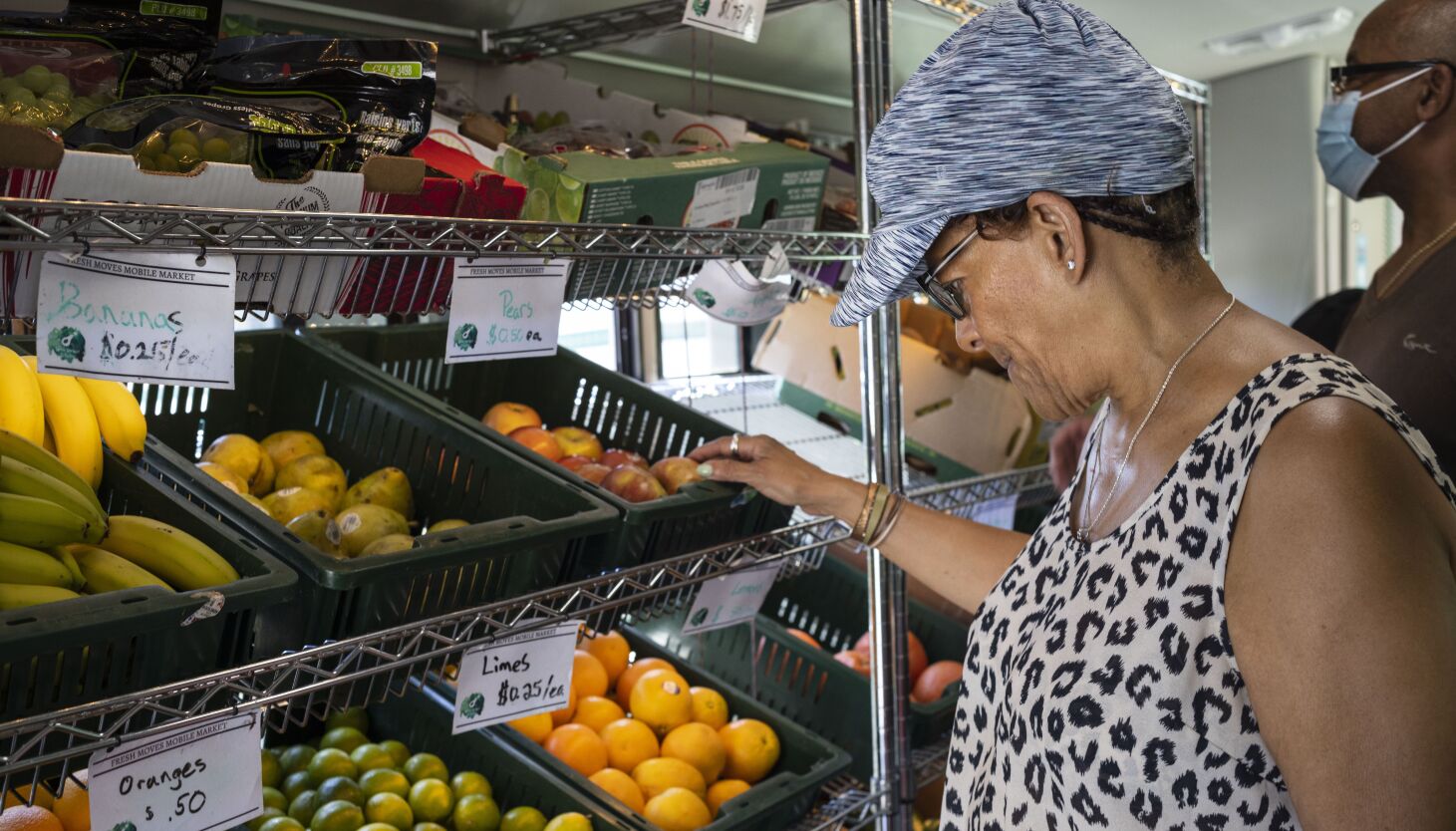Mobile farmers market sees skyrocketing demand due to food insecurity, rising grocery prices
Ten minutes after closing time at the Fresh Moves mobile farmers market, a man approaches Timuel Jones-Bey hoping he still has time to shop on the shuttle bus before it’s packed up.
But the farmers market-on-wheels needs to make it to the other side of Bronzeville in time for the start of its next stop in just 20 minutes.
“We’re closed,” Jones-Bey says before adding, “but I’ve got a box for you.”
That interaction on a recent Thursday was repeated several more times over the next 15 minutes, with Jones-Bey never failing to leave a customer with an armful of fresh produce.
He knows or at least recognizes nearly every customer, and his conversations are filled with laughter despite the ticking clock. His knowledge of their personal lives fuels his desire to send each away with at least some fresh food.
“Some people have certain issues,” Jones-Bey said. “Some people have blood pressure issues, diabetes, stuff like that. So knowing that ahead of time, when they come when we’re closed, we’re still trying to help them and service them with what they need.”
Jones-Bey and his other workers were left with mere minutes to make it to the final stop of the day. A line of customers was already waiting for the brightly colored bus emblazoned with images of produce and smiling faces.
Urban Growers Collective’s Fresh Moves runs five days a week and makes several stops — all at least an hour — at locations across the city’s South and West sides, including South Chicago, Avalon Park, Englewood and Fuller Park.
Timuel Jones-Bey, right, speaks to customer Dan Owen, left, as he checks out at one of the stops of the Mobile Farmer’s Market by Urban Growers collective on June 30 at 330 E. 51st St. in Bronzeville.
Anthony Vazquez/Sun-Times
The affordable market has seen a skyrocketing demand for its goods. The amount of fresh produce ordered from the local farms it partners with has…



